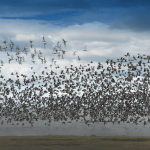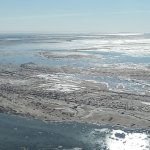By: Arne Lesterhuis, Manomet and Isadora Angarita, Manomet
Interior river habitats in South America are important to migrating shorebirds for foraging and roosting, and to some extent, as navigation to their wintering grounds. However, data on shorebird use in these ecosystems is very limited, both for Nearctic-breeding shorebirds and resident species like the Collared Plover (Charadrius collaris) and Pied Plover (Vanellus cayanus) who use these areas throughout their lifecycle.
River systems in the Amazon have received little attention for their importance for migrating shorebirds. However, there has been a few scattered records, trip reports, and a handful of studies that have provided some insight in their potential importance. More recently, tracking studies of the Buff-breasted Sandpiper (Calidris subruficollis) conducted by Rick Lanctot et al. documented movements along large rivers in South America, showing the species to stop at several locations along rivers in the Amazon of Colombia, Peru and Bolivia.
In 2021, the United States Forest Service International Programs (USFS-IP) supported the Peruvian nonprofit organization, CORBIDI to initiate river surveys in the vicinity of Puerto Maldonado, Pucallpa and Iquitos, all in Peru. These surveys resulted in interesting observations of Buff-breasted Sandpipers using sandbanks with short vegetation and large numbers of Upland Sandpiper (Bartramia longicauda) being flushed from tall vegetation on river islands (F. Angulo pers. comm.).
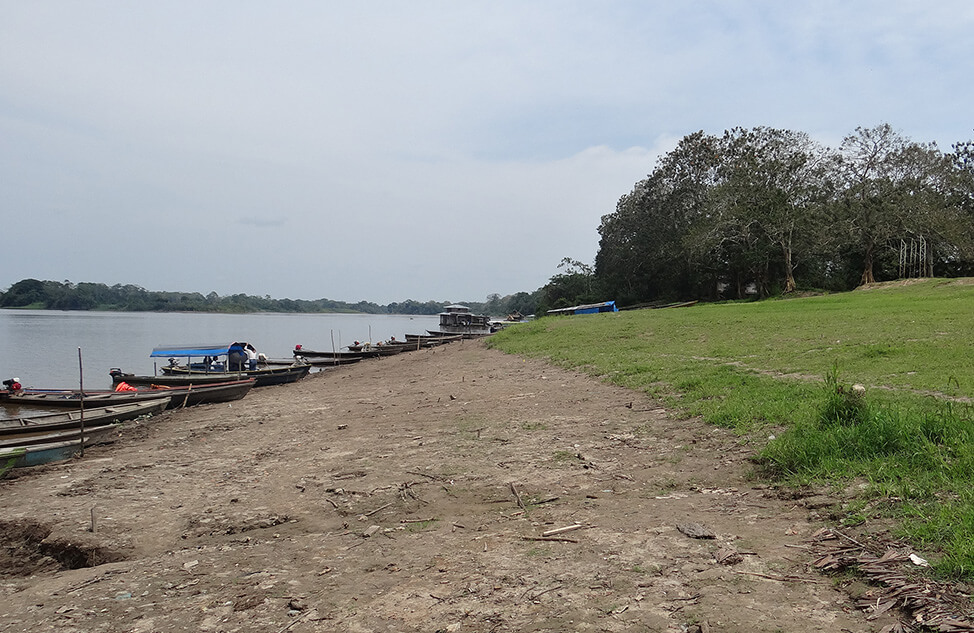
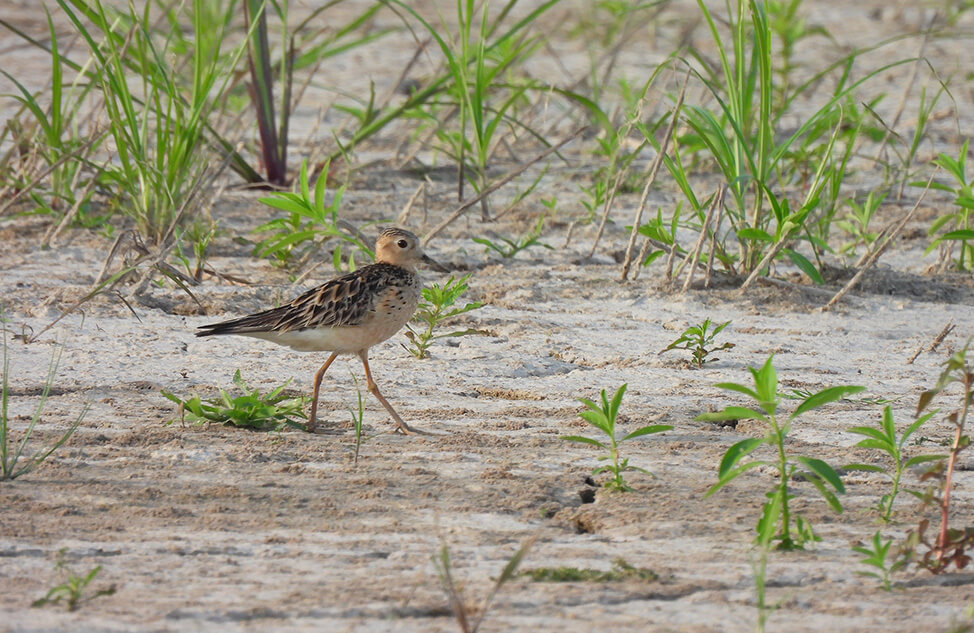
Left: Riverbank of the Amazon River, largest river in the world by volume of water. Photo: Fernando Angulo. Right: Buff-breasted Sandpiper, a hemispheric traveler and key species of the Midcontinent flyway, appears to use Peruvian Amazon river sandbanks to rest and refuel before going South to its wintering grounds. Photo: Carlos Ruiz-Guerra.
These observations triggered interest in implementing regular and comprehensive surveys. The Amazon basin was also identified in the strategic framework of the Midcontinent flyway as one of the key ecoregions for shorebirds. Critical threats in the area including mining and the development of dams, that affect key habitats of critical species such as the Buff-breasted Sandpiper, were included in the framework.
Lack of data limits the possibility to define clear conservation actions, therefore increased efforts to gather information is timely. Surveys were already planned for Peru and Colombia for the 2022-2023 migration season, but in search of a longer-term effort, USFS-IP and WHSRN Executive Office jointly organized a workshop in Iquitos, Peru to establish a methodology to be used for surveys along Amazon rivers.
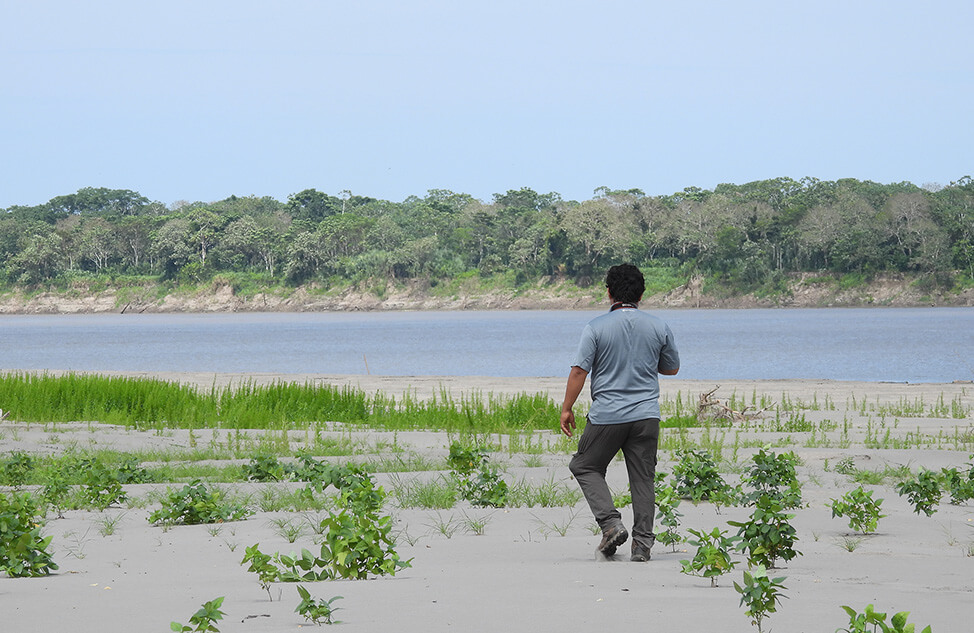
One of the students surveys a flood plain of the Amazon River. Photo: Fernando Angulo
The workshop was held from September 26-30, 2022. An international team of shorebird conservationists convened including Fernando Angulo (CORBIDI, Peru), Tjalle Boorsma (Asociación Armonía, Bolivia), Carlos Ruiz-Guerra (Asociación Calidris, Colombia), Matt Reiter (Point Blue, USA) and Jim Chu representing the USFS-IP. Remotely the meeting was assisted by Rob Clay (Manomet’s Director of the WHSRN Executive Office), Isadora Angarita (Manomet´s Flyways Conservation Specialist) and Arne Lesterhuis (Manomet’s Shorebird Monitoring and Conservation Specialist). Three local students, Jesús Alferez, Avita Taricuarima, and Luis Garcia, currently in training with Fernando Angulo to conduct shorebird surveys, also participated.
The workshop included discussions on survey protocols and a field trip to practice and evaluate different protocols. Methods discussed included the use of transects for open areas and “zigzagging” through areas with tall vegetation to flush shorebirds and get an idea of detectability. For the surveys planned for the coming year, a protocol will be developed based on these discussions, taking into consideration the experiences from the workshop and field trip.
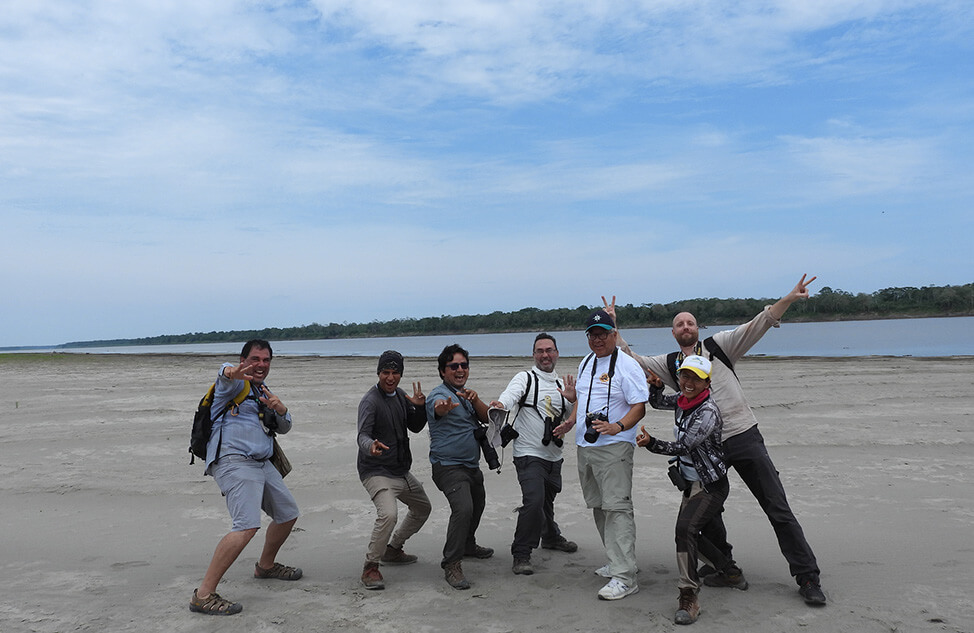
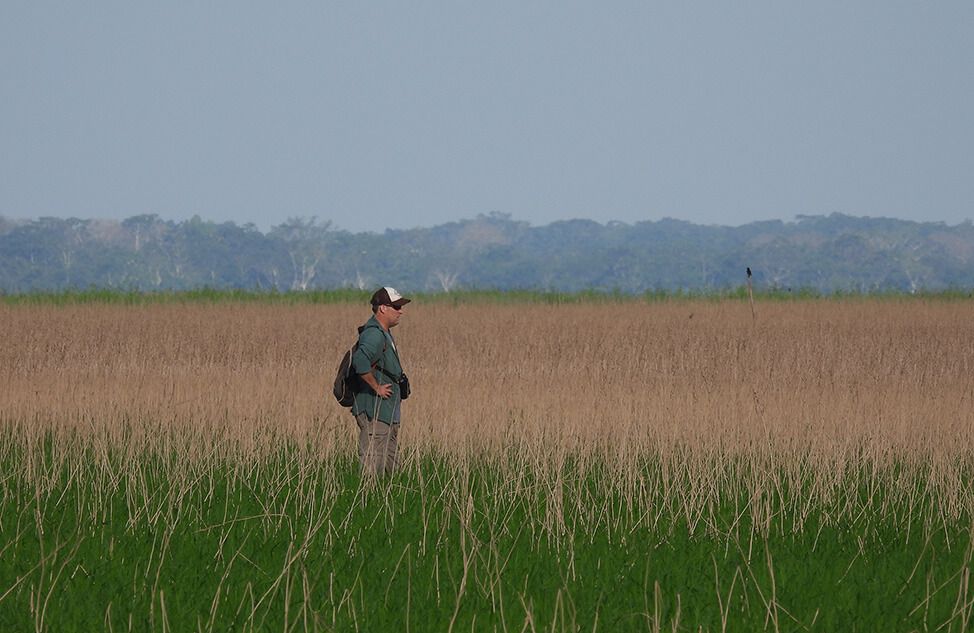
The survey team having a great time on the Amazon River islands near Iquitos, Peru. Photo: Fernando Angulo.
During a successful field trip on the Amazon River, a total of 10 Nearctic shorebirds were observed by workshop participants. Highest numbers were encountered for the Upland Sandpiper (123 individuals) and Buff-breasted Sandpiper (664 individuals). The high number of Buff-breasted Sandpipers was an especially exciting surprise to the team as it included a total flock of 348 individuals, which is believed to be the highest number ever reported for Peru. Noteworthy was also the record of a Semipalmated Sandpiper (Calidris pusilla), a rare species in the interior of South America.
Surveys in Bolivia, Colombia and Peru are very important, but also just a start. Information is required at a wider range to protect the Amazon Basin and other major interior river systems for shorebirds. As MSCI indicates, these habitats are highly threatened and need our immediate attention. Through international collaborations, data gathering and sharing of information, clear conservation strategies can be developed and implemented to secure a future for both shorebirds and people.
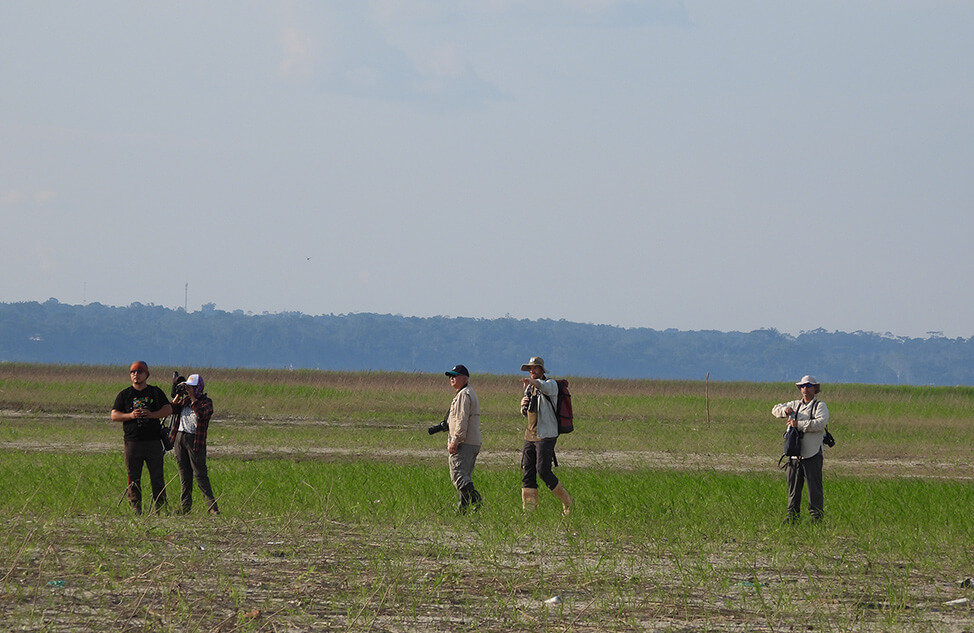
Survey team walks the riverbank, searching for shorebirds. Photo: Fernando Angulo
If you would like to learn more or have ideas to help the increased efforts in the region, please contact Arne Lesterhuis.
Lanctot, R.B., S. Yezerinac, J. Aldabe, J. Bosi de Almeida, G. Castresana, S. Brown, P. Rocca, S.T. Saalfeld & J.W. Fox. 2016. Light-level geolocation reveals migration patterns of the Buff-breasted Sandpiper. Wader Study 123(1): 29–43.
Cover Photo: Amazon Riverbank. Photo: Creative Commons





